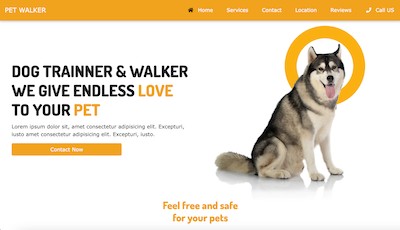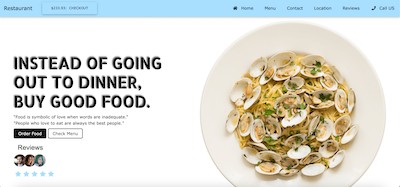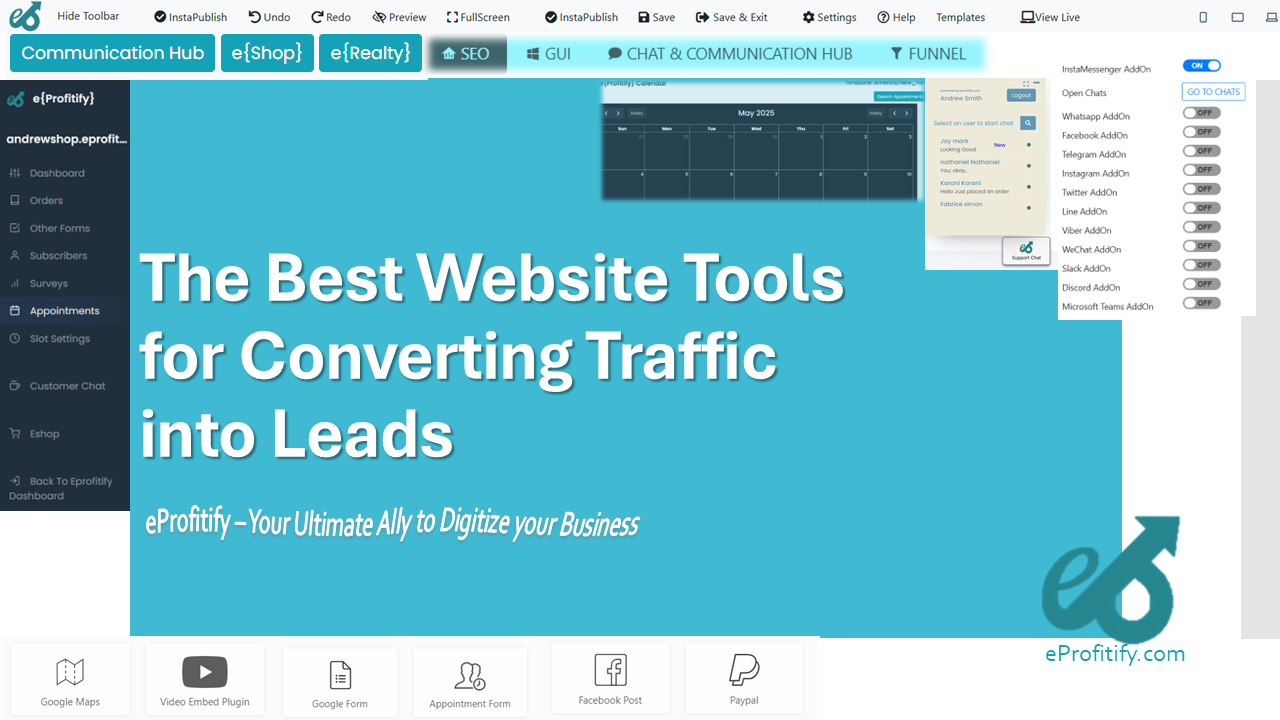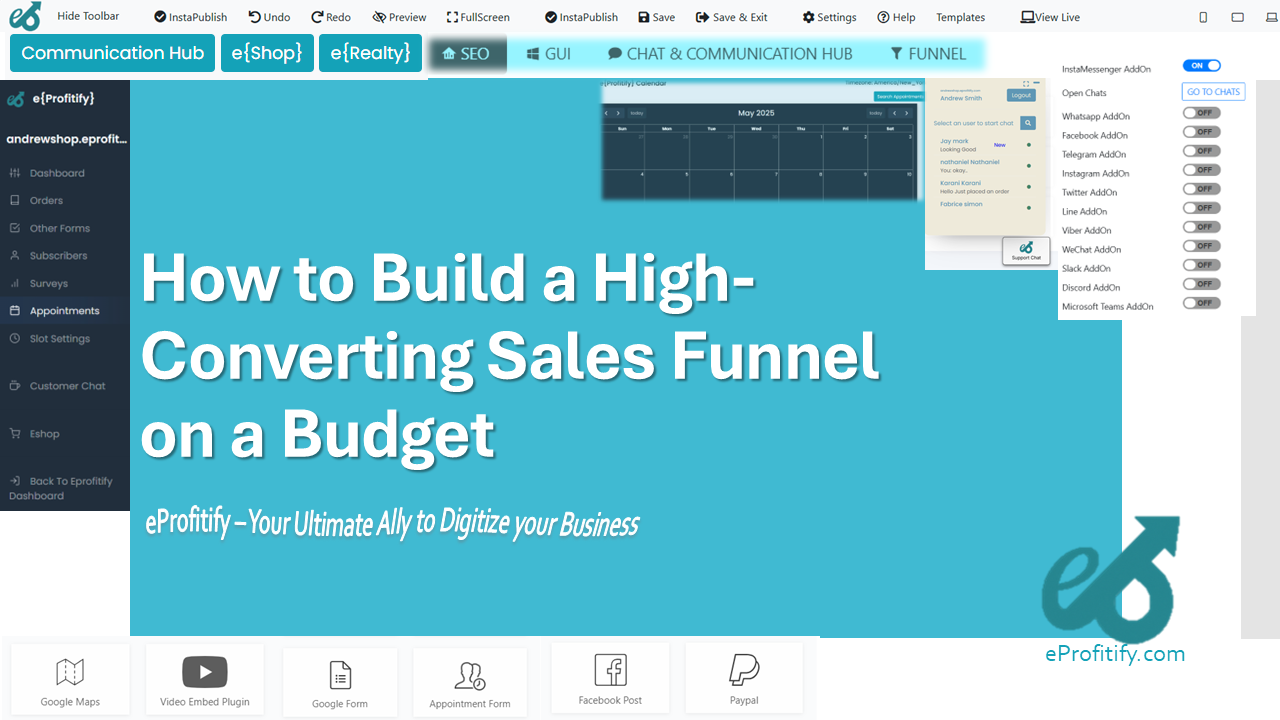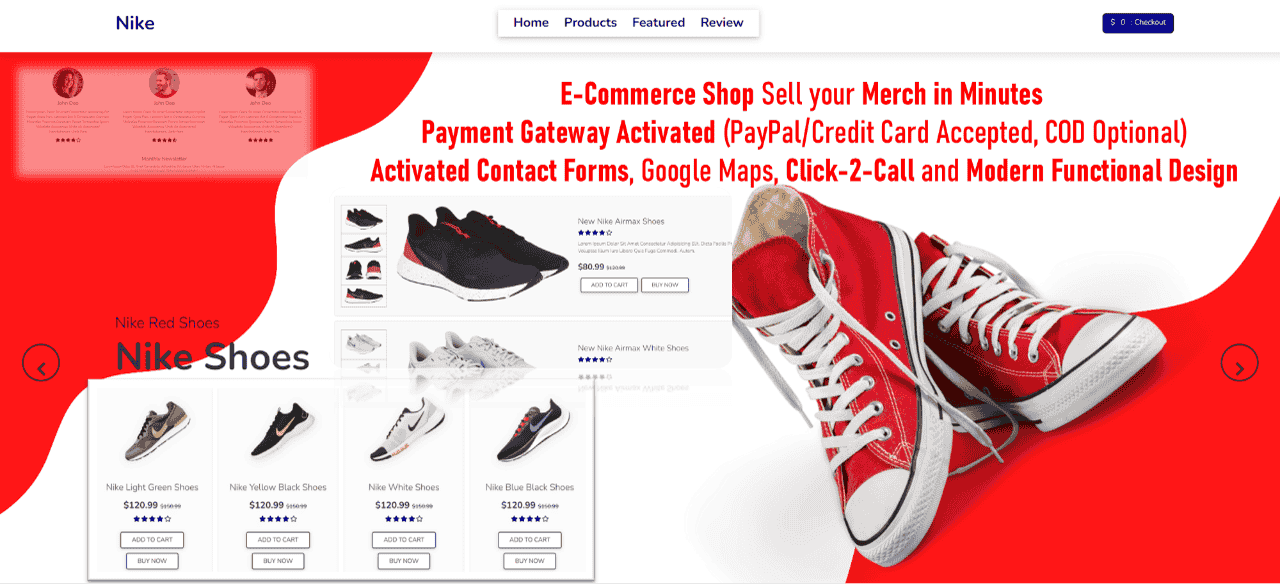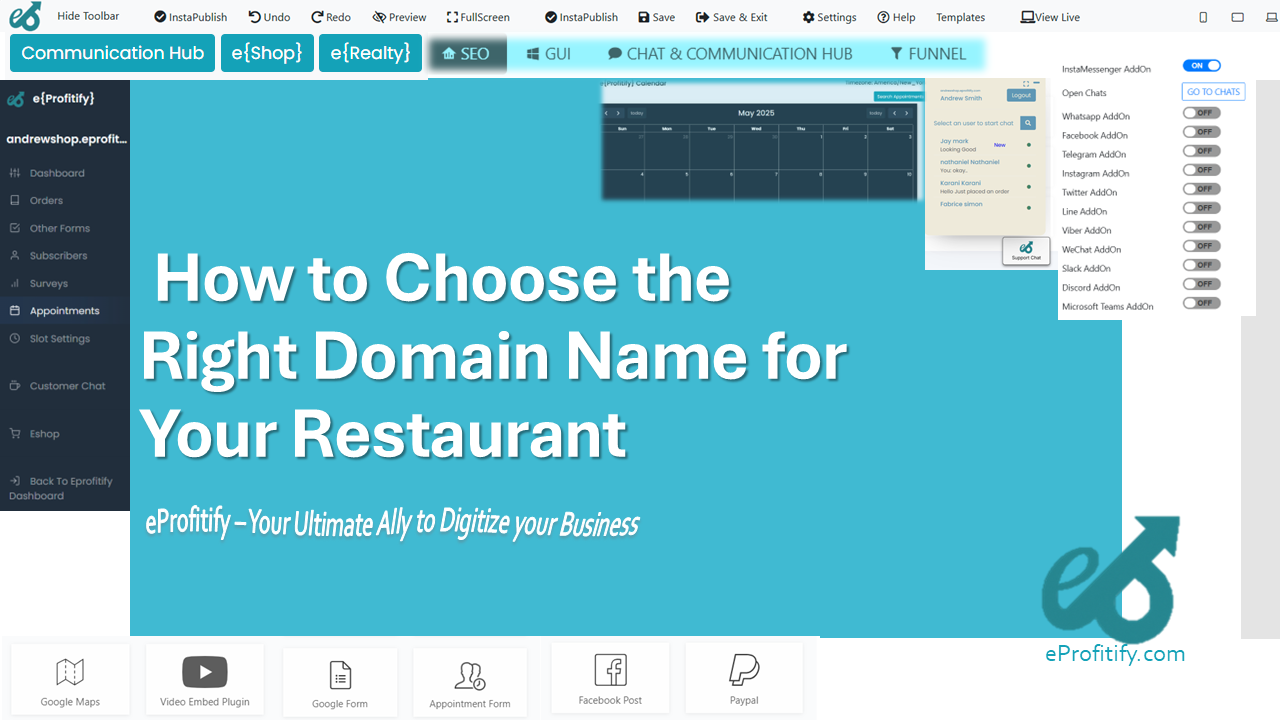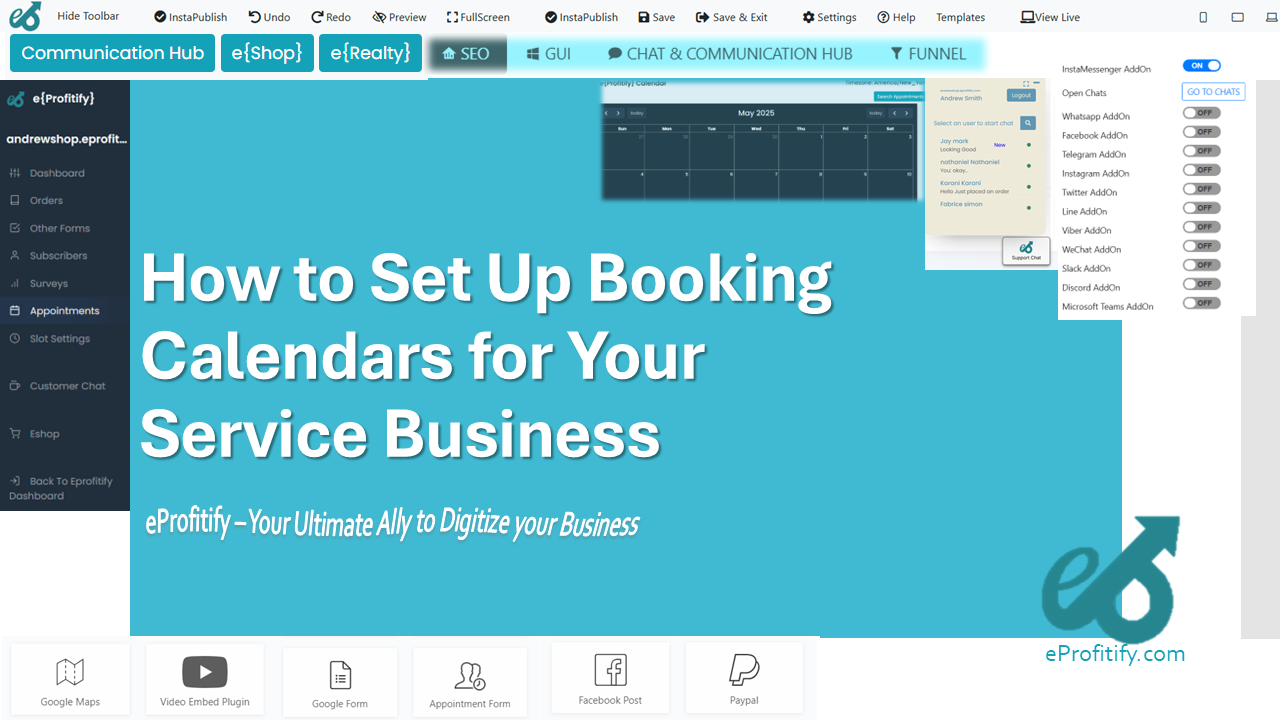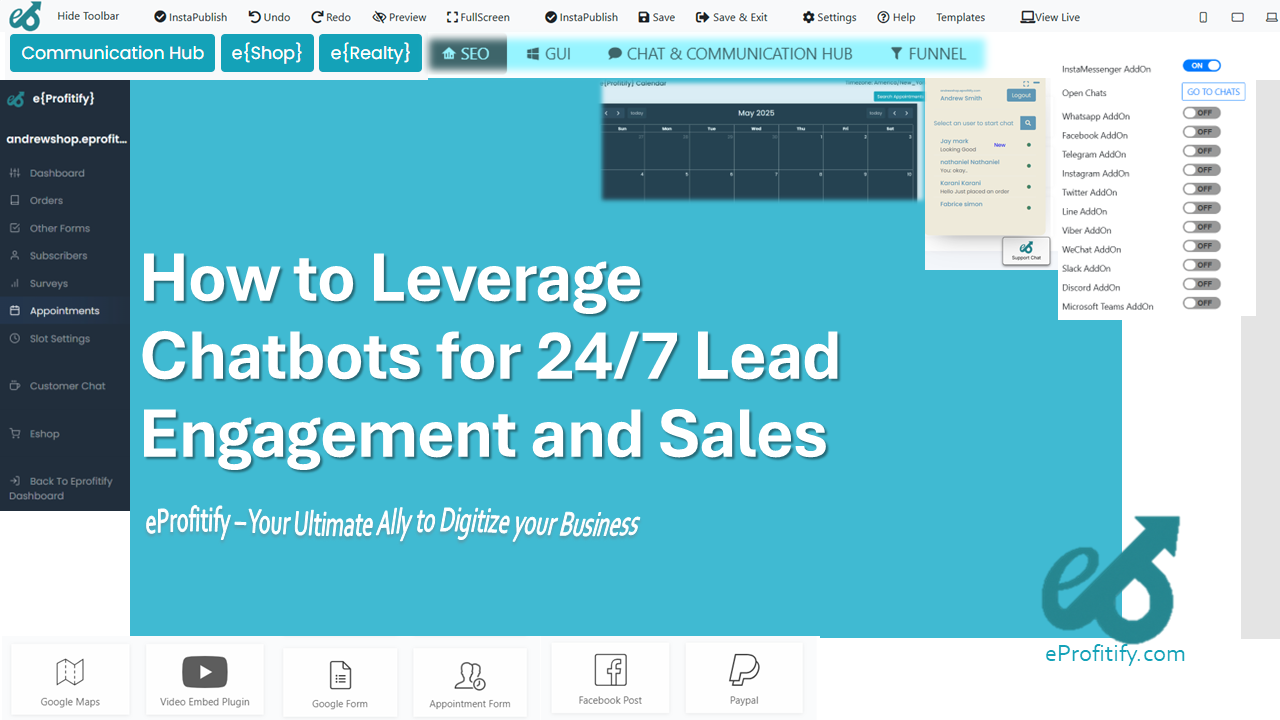The Role of SEO in Restaurant Blog Writing
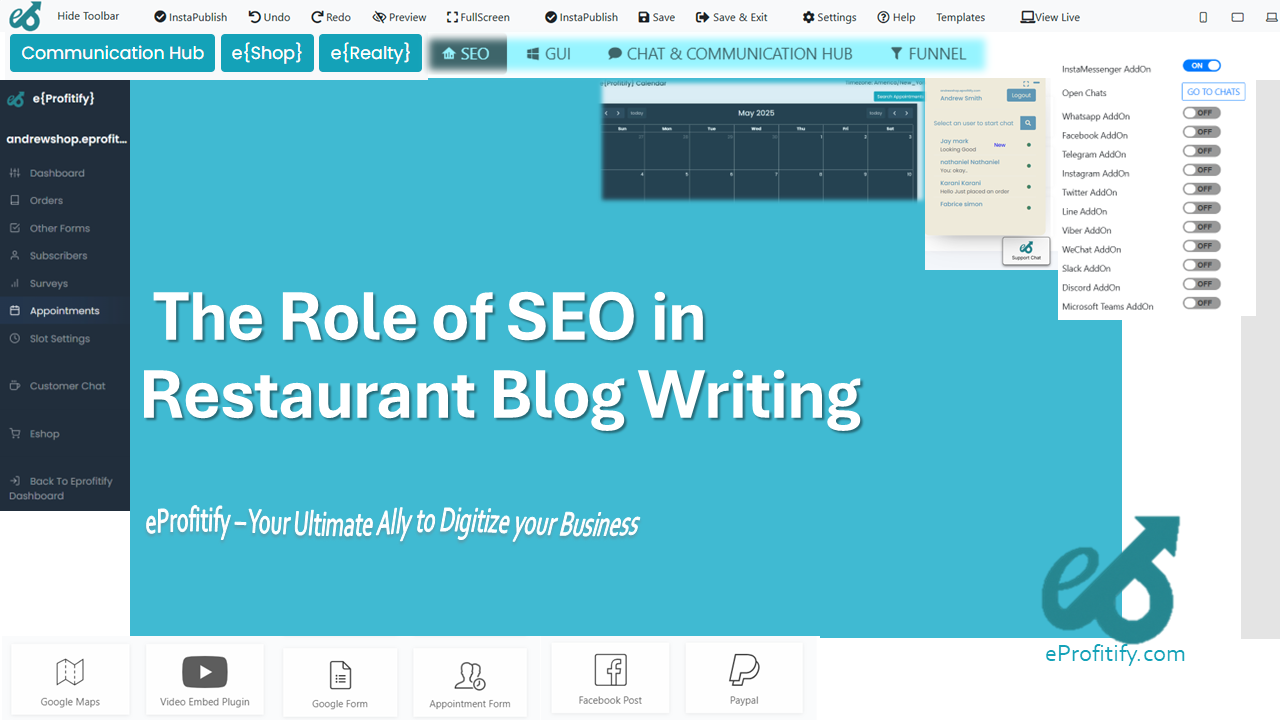
The Role of SEO in Restaurant Blog Writing: Boosting Visibility and Engagement
In the digital age, a restaurant’s success hinges on its online visibility. With 87% of consumers using search engines like Google to evaluate local businesses, SEO (Search Engine Optimization) has become a cornerstone of effective digital marketing strategies, especially for restaurants. Blog writing, when infused with SEO best practices, acts as a powerful tool to attract hungry customers, build brand authority, and drive foot traffic. This article explores the pivotal role of SEO in restaurant blog writing, supported by compelling statistics, and highlights how platforms like eProfitify streamline SEO and operational efficiency through innovative features.
The Importance of SEO for Restaurants
Restaurants are inherently local businesses, making local SEO a non-negotiable component of their marketing strategy. Studies reveal that 72% of consumers who perform a local restaurant search visit the business within five miles. Terms like “best brunch near me” or “authentic sushi [City Name]” dominate search queries, emphasizing the need for hyper-localized content.
Blogs allow restaurants to target these keywords organically. For instance, a post titled “Top 10 Vegan-Friendly Eateries in Downtown Seattle” can rank for location-specific searches, driving traffic from local diners. Moreover, blogs enhance domain authority by consistently publishing fresh, relevant content, which search engines reward with higher rankings.
Google’s algorithm prioritizes websites offering value, expertise, and user-friendliness. A blog showcasing recipes, chef interviews, or event highlights not only engages readers but also signals to search engines that the site is a credible resource. According to HubSpot, businesses with blogs generate 55% more website visitors than those without.
Key SEO Strategies for Restaurant Blogs
-
Localized Keyword Research:
Incorporate long-tail keywords like “family-friendly Italian restaurant in Austin” or “late-night pizza delivery.” Tools like Google Keyword Planner or Ahrefs help identify high-impact, low-competition phrases. BrightLocal reports that 64% of consumers use keywords with “near me” in their searches, making geo-targeting essential. -
Mobile Optimization:
With 60% of restaurant searches occurring on mobile devices, blogs must load quickly and display seamlessly across screens. Google’s mobile-first indexing prioritizes mobile-friendly sites, and a one-second delay in load time can reduce conversions by 7%. -
Voice Search Optimization:
Voice searches, which constitute 58% of local business queries, often use natural language like, “Where can I get tacos open now?” Blogs should answer these questions conversationally and include FAQ sections. -
Visual Content and Schema Markup:
High-quality images of dishes can increase engagement by 60%, but they must be optimized with descriptive alt text (e.g., “crispy-margherita-pizza-chicago”). Schema markup helps search engines understand content, enabling rich snippets like calories or price ranges in search results. -
Internal Linking and User Experience (UX):
Linking related blog posts (e.g., connecting a “Date Night Restaurants” article to a “Valentine’s Day Specials” post) keeps readers engaged and distributes page authority. A clean UX with intuitive navigation reduces bounce rates and boosts time-on-page metrics.
eProfitify: A Holistic Platform for SEO and Beyond
While SEO is critical, managing a restaurant’s digital presence involves juggling multiple tools—content publishing, customer engagement, reservations, and analytics. This is where eProfitify shines as an all-in-one solution tailored for the hospitality industry.
-
SEO-Optimized Blogging:
eProfitify’s built-in CMS ensures blogs are structured for SEO success. Features like automatic meta tag generation, keyword density analysis, and mobile-responsive templates simplify on-page optimization. Real-time analytics track post performance, enabling data-driven adjustments. -
Instant Messaging and CRM:
The platform’s live chat tool allows restaurants to engage visitors directly, answering queries like “Do you offer gluten-free options?” while guiding them to relevant blog content. Integrated CRM tracks customer preferences, enabling personalized marketing—crucial when 73% of diners expect tailored experiences. -
Appointment Management:
An integrated booking system lets customers reserve tables via the blog, reducing friction. Statistics show that online reservations account for 40% of restaurant bookings, making this feature indispensable. -
Ecommerce Integration:
Sell gift cards, merchandise, or meal kits directly through the blog. With 56% of diners preferring to order takeout online, this feature taps into a growing revenue stream. -
Reputation Management:
Monitor and respond to reviews from a single dashboard, as 94% of diners avoid restaurants with poor ratings. Positive reviews can be highlighted in blogs to build trust.
The Statistical Edge: Why SEO and Tools Matter
- Traffic and Conversion: Websites with blogs attract 97% more inbound links, per Tech Client.
- Mobile Influence: 69% of diners research menus on mobile before dining (Toast).
- Local Searches: 76% of “near me” searches result in a visit within 24 hours (Google).
- Content ROI: Businesses prioritizing blogging are 13x more likely to see positive marketing ROI (HubSpot).
By leveraging eProfitify’s comprehensive toolkit, restaurants amplify their SEO efforts while streamlining operations. For example, a blog post about “Summer BBQ Specials” can link directly to an eCommerce page for pre-orders, while the CRM triggers personalized emails to past customers—all managed within one platform.
Conclusion
SEO transforms restaurant blogs from static pages into dynamic customer acquisition tools. By optimizing for local keywords, mobile users, and voice search, restaurants can dominate search rankings and convert clicks into reservations. Integrated platforms like eProfitify elevate this process by merging SEO with operational tools—instant messaging, CRM, and eCommerce—creating a seamless ecosystem for growth. In a world where 88% of diners trust online reviews as much as personal recommendations, a well-optimized blog powered by eProfitify isn’t just an asset; it’s a necessity.
Investing in SEO and versatile management tools ensures restaurants stay visible, competitive, and customer-centric in the ever-evolving digital dining landscape.
